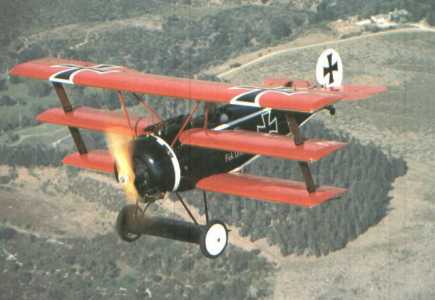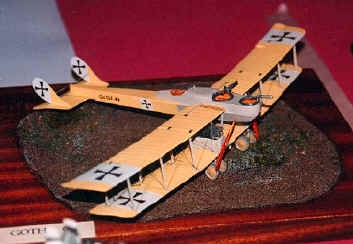 |
|
|||
|
|
||||
 |
German Aircraft of WW1 |
|
The PFALZ Fighter |
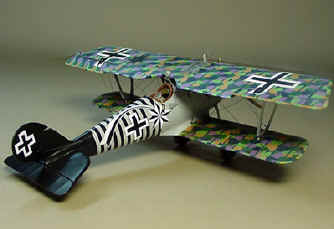 |
Pfalz D.III The German Air Force began equipping fighter units with the rugged and reliable Pfalz D.III in August 1917. It helped revive Germany's air superiority over the Allies. Compared to its contemporary rivals, the Pfalz D.III was not a great fighter, but it was very fast in a dive. They were used against the AFC on 4th July 1918 at the Battle of Hamel. The AFC were dropping ammo and food to the 3rd Division and came under attack from Pfalz fighters who were driven off. |
| At
the outbreak of war in Europe on 4 August 1914 Tauben were already in
service with the air forces of Italy, Germany and Austro-Hungary as
observation and training aircraft, and many later-famous German pilots
learned to fly on aircraft of this type. Privately owned Tauben were
impressed for military service, and a large-scale production programme
was put in hand. By this time Dr. Etrich had relinquished his copyright
in the design, following a dispute with Rumpler, and this left the way
clear for Tauben for various types to be built in Germany by the
A]batros, DFW, Gotha, Halberstadt, Jeannin, Kondor, Krieger, LVG,
LilbeckTravemuinde and Rumpler factories. About five hundred
Tauben were built in Germany, those by DFW and Jeannin being known as
Stahltauben because of their steel-framed fuselages.
In August 1914 the Taube quickly proved its worth as a reconnaissance aircraft when it gave the Germans warning of a Russian advance during the Battle of Tannenburg. Later that month it was used for bombing when Lt. von Hiddesen dropped a small load of tiny bombs on Paris. The Taube was a stable aircraft with pleasant flying characteristics, and considering that it was already four years old when war broke out, its performance for 1914-15 was not at all bad. However, it was not highly manoeuvrable, and since it carried no armament other than crew members' revolvers or rifles), it was of little front-line value by the spring of 1915. It remained in use for a year or more thereafter as a very useful training type |
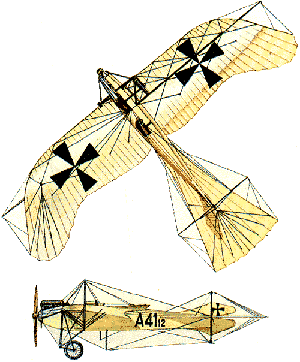 |
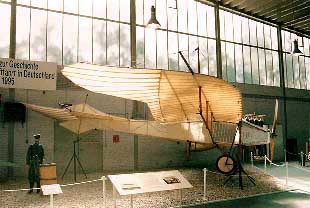
|
|
|
The Taube (Dove) The Taube's wing design is based on the zanonia tree seed pod, which drifts through the air for great distances. |
|
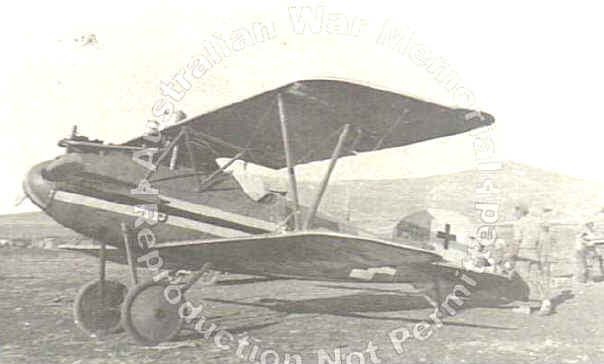 |
|
| The Taube was used to drop bombs on the 1st Light Horse Brigade killing eight men and wounding twenty-two. Fortunately other bombs missed the mark. In addition to the casualties amongst the men, thirty-six horses were killed, nine wounded, and 123 missing. |
|
The FOKKER Triplane |
| The
Fokker Dr 1 was a successful plane in
World War One.
It was known as one of the best dogfighters of the war. It
was a terrible plane in the hand of an inexperienced pilot but with an
experienced pilot it was an almost unstoppable dogfighter. |
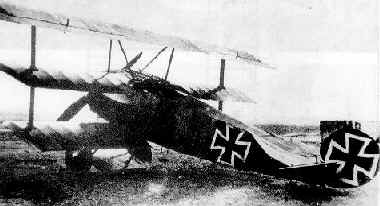 |
||||
One pilot that
made the Fokker Dr 1 very successful was 'Richoften, Manfred Albrecht,
Rittmeister Freiherr von' or commonly known as the 'Red Baron'. He had 80
confirmed victories, which made him the most
successful pilot in World War 1. He was also the leader of the Flying
Circus or Jasta 11, (a squadron during World War One that shot down more
than 300 allied planes).
|
|||||
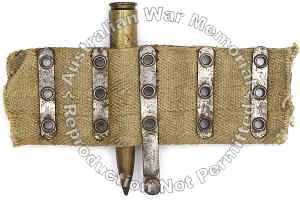 |
Section of cotton
webbing ammunition belt from one of the two Luft Maschinen Gewehr
(LMG) 08/15s fitted to Baron Manfred von Richthofen's Fokker Dr I
aircraft.
A single 7.92mm bullet is fitted
to one pocket, its impressed headstamp markings indicates that it is
a Mauser S67 round manufactured in June 1917 by Rheinisch-Westfälische
Sprengstoff (RWS) A.G., of Utendörffer, Nürnberg. |
| This
round has been assembled using a fired cartridge, and is presumably
not part of the ammunition carried on von Richthofen's last flight,
but a later addition.
The dividers between the cartridge pockets on the belt are made of steel, rather than the manufacturer's specified brass, indicating that it was of German wartime economy manufacture. Frank Ronald Rawlinson, enlisted in the AIF in August 1916, and served as 424A 2nd Class Air Mechanic with 3 Squadron, Australian Flying Corps. He was present at the autopsy conducted on the body of von Richthofen by the 3 Sqn doctor on the evening of 21 April 1918, and removed several items from the crashed Fokker Dr I, 425/17, when its remains were brought to 3 Squadron's airfield at Bertangles. |
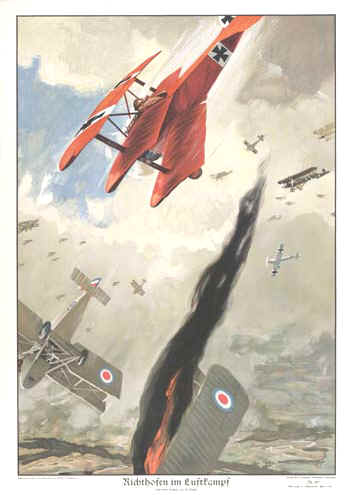 |
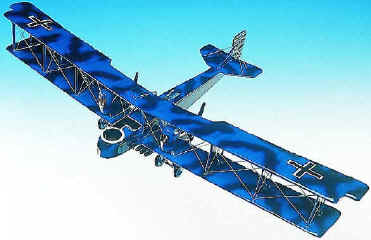 |
The GOTHA bomber was one of the first successful 'heavy' bombers. It carried a crew of 3 (pilot and 2 machine gunners) and was propelled by two push propellers. It had a distinctive engine noise that the troops called "The Gotha Hum". Gothas bombed the ANZACs many times and were responsible for many casualties. |
|
The Gotha line of "heavy" bombers was a most important development for bomber aircraft. The Gotha Ursinus G-I first flew in 1915. The aircraft were improved throughout the war until the G-IV series. It was the mainstay of the German strategic bomber program. It was the G-IV that participated in the bombing of London and other locales in southern England once the Zeppelins were countered by better aircraft and incendiary bullets. Later versions had biplane tails with twin fins and eliminated the position for the nose gunner. The blunt nose made it possible to place the engines closer together, and, coupled with placing the tailfins in the slipstream, gave better one-engine performance -- making it possible to run the engine at full power.
|
| PALESTINE.
The enemy aerodrome at Jenin. D.F.W. C.V two-seater reconnaissance plane. |
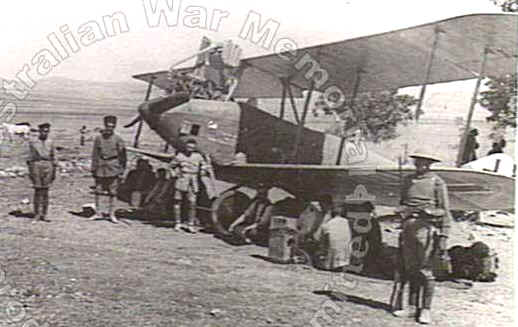 |
